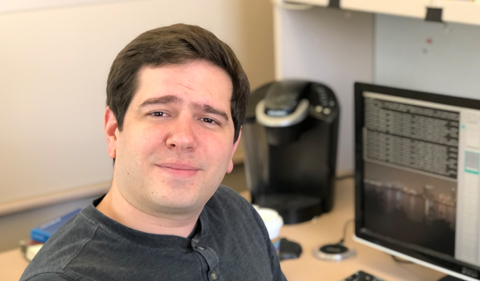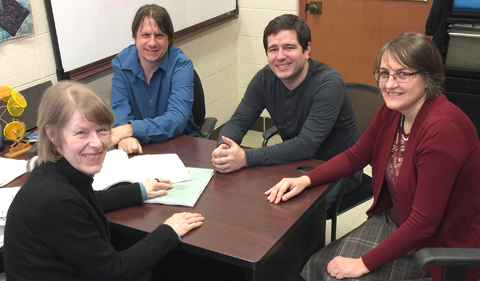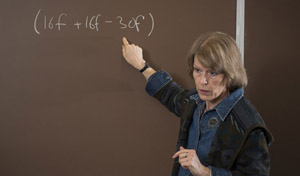One of the central challenges of nuclear physics is to understand the structure of the atom’s nucleus and nuclear forces. Nuclear physicists for decades have sought ways to accurately compute the scattering of a proton or neutron from the nuclei, but lacked access to a sophisticated description of the nuclear structure.
Ohio University Physics & Astronomy doctoral student Matthew Burrows has proposed a new method to use in his paper, “Ab initio translationally invariant nonlocal one-body densities from no-core shell-model theory” published in Physical Review C, a journal of the American Physical Society.
Burrows is lead author and a student of Dr. Charlotte Elster, a professor in the department and a coauthor. Other coauthors are Dr. Gabriela Popa, an associate professor on OHIO’s Zanesville campus, Kristina Launey, an assistant professor at Louisiana State University, and Andreas Nogga, an OHIO 2016-17 Visiting Glidden Professor and staff scientist at the Jülich Research Center in Germany.
“Our paper describes an advanced method of obtaining properties on the structure of nuclei using a common piece of computational nuclear physics,” says Burrows. “We analyze some of the new dependencies and features. We are proposing a method to obtain the motion of the nucleons in the nuclei through a new formalism of current theory.”
The authors show how to rebuild the nuclear structure information obtained by sophisticated first principles calculations. These calculations use the forces between two and three nucleons (protons and neutrons) that build up light nuclei in such a fashion that the model created can be used in calculating nuclear reactions.
The work also showed that entire structure is determined by how much energy each nucleon holds. Though this seems a trivial insight, the authors were able to give a clear visual account of the nonlocal contributions building up the nuclear density.
“This work is one of the essential ingredients needed to compute the scattering of a proton or neutron from the nuclei we considered,” explains Elster. “In the late 1990’s, my student Steve Weppner developed the computational tools to describe this process but did not have the sophisticated description of the nuclear structure available, which Matt’s work now entails.”
Taking all of this together, the work presented in the paper allows scientists to consistently describe the reaction of a proton hitting the nucleus using the same nuclear force in all steps of the calculation. This is a large step forward in understanding the effective interaction between nucleons and nuclei. This is important for the physics program at the new Facility for Rare Isotope Beams center being built at Michigan State University by the U.S. Department of Energy.
Burrows argues that the theory will provide better modeling and predictions for properties of light nuclei. “The next step in our work is to use the results in this paper to predict nuclear reaction data through previous nuclear theory work. After that, we hope to improve the reaction calculations to handle different types of nuclei. This work was a unique approach to obtaining nuclear structure data that was previously approximated by simple forms.”
- Read the paper.





















Comments